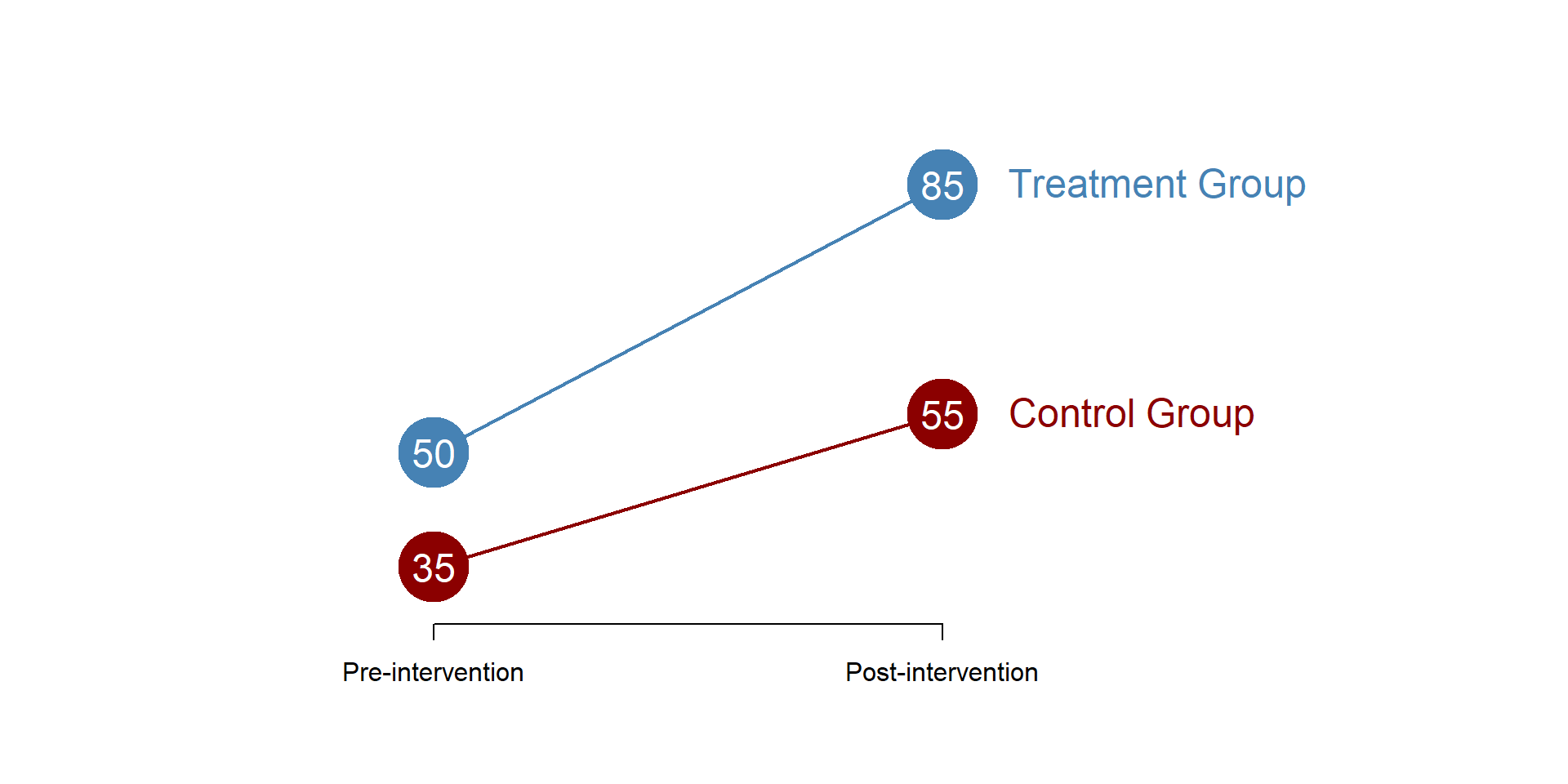If you’re looking for a fun and creative way to show your appreciation for a special teacher in your life, why not try out some … Read more
Continue reading
Overview The difference in difference DID technique originated in the field of econometrics but the logic underlying the technique has been used as early as the 1850 s by John Snow and is called the controlled before and after study in some social sciences What Is Difference-in-Differences Analysis. Difference-in-Differences (DID) analysis is a statistic technique that analyzes data from a nonequivalence control group design and makes a casual inference about an independent variable (e.g., an event, treatment, or policy) on an outcome variable.

The difference in differences DiD method is a statistical technique or quasi experimental design method and it is used primarily in the social sciences and econometrics In social science it is sometimes called a controlled before and after study General Method Difference-in-Difference Design. The difference-in-difference (DID) design is probably the most frequently used design of natural experiments. The DID design aims to estimate an average treatment effect by comparing the pre-treatment to post-treatment changes in an outcome variable (e.g., job satisfaction, job performance) between a treatment .

Difference In Difference Design
Difference in differences has become one of the most widely used methods for causal inference in higher education research We use this chapter to introduce new researchers to this method with an overview of difference in differences models common threats to their validity and robustness checks sherlu on twitter learn the difference . Yet another collection of inspiring stories and great designs not justImpact evaluation using difference in differences emerald insight.

Difference In Difference

Chapter 18 Difference in Differences The Effect
The difference in difference DID design is a quasi experimental research design that researchers often use to study causal relationships in public health settings where randomized controlled trials RCTs are infeasible or unethi cal However causal inference poses many challenges in DID designs Abstract 1. Introduction 2. The Difference-in-Differences method 3. Parallel trends and other assumptions 4. Further details and considerations for the use of Difference-in-Differences 5. Examples of Difference-in-Differences studies in the broader management literature 6. Discussion and conclusion
In differences design removes these biases by observing outcomes for the two groups at two time points This article introduces the methods and assumptions for the difference in differences design Concluding Remarks. Difference-in-differences design: fully exploit the panel data structure cross sectional and before-and-after designs do not parallel trend assumption adjusts for time-invariant unobserved confounders tradeoff between dynamics and unobservables. Extensions: adjusting for baseline covariates nonlinear difference-in .

If you’re looking for a fun and creative way to show your appreciation for a special teacher in your life, why not try out some … Read more
Continue reading
Are you feeling stressed and overwhelmed? Looking for a way to relax and unwind? Why not try coloring? Printable stress relieving coloring pages are a … Read more
Continue reading
Kindness is a simple yet powerful act that can brighten someone’s day and make the world a better place. One way to spread kindness is … Read more
Continue reading
If you’re looking for a creative way to raise awareness for autism, why not try coloring? It’s a fun and relaxing activity that can also … Read more
Continue reading
If you have a friend or family member who is feeling under the weather, sending them a Get Well Soon coloring page can be a … Read more
Continue reading
If you’re feeling stressed and overwhelmed, taking a moment to relax and unwind can make all the difference. One great way to do this is … Read more
Continue reading
April is Autism Awareness Month, a time to celebrate and promote acceptance for individuals with autism. One way to show your support is by spreading … Read more
Continue reading
Feeling stressed out and overwhelmed? Sometimes, all you need is a little bit of coloring therapy to relax and unwind. Printable stress relief coloring pages … Read more
Continue reading
Are you looking for a thoughtful way to show your appreciation to a teacher in your life? Look no further! Our collection of free printable … Read more
Continue reading
Feeling under the weather or know someone who is? Brighten up their day with our collection of free printable get well coloring pages! These cheerful … Read more
Continue reading